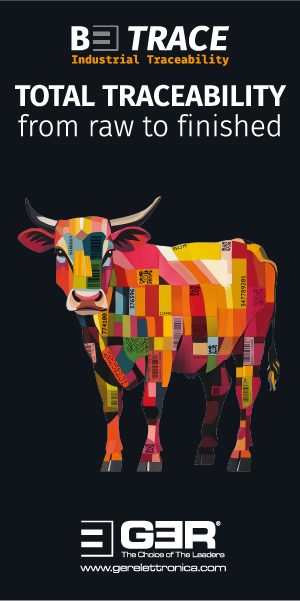Market Intelligence - 07.12.21
Macroeconomics
In the last two weeks, the pandemic has again taken over the front pages. The pandemic is also completely inseparable from the economy and that is why you cannot escape news of it.
The emergence of a new mutation about which, in the end, we still don’t know much, has fuelled fears and anxieties around the globe. After two years with the pandemic, everyone now knows what a new flare-up means and what the dramatic consequences will be if the vaccines against this or another new mutation no longer have the hoped-for effect. Until science comes to definitive conclusions, we have to hope and believe in what is being said, that the measures taken so far and the vaccinations taken are not completely ineffective.
In any case, this is a considerable step backwards because, in many countries, not enough people have been vaccinated yet and there is the threat of the return of restrictive measures that would severely limit public and economic life.
With the news about the new variant, the stock exchanges and the commodity markets reacted accordingly. There were significant drops in prices because the economic recovery was perceived to be in great danger. So far, however, no great negative effect has been felt, and this can be seen very clearly in the bottlenecks in many labour markets. Almost everywhere in the western world one encounters the same complaint at the moment: there is currently not enough qualified labour to offer the desired production and services levels.
Many companies are asking themselves what has changed since before the pandemic in early 2020. There are many theories and explanations but none of them are really convincing. Global production is certainly nowhere near the levels we saw in January 2020. Labour has shifted within the economy, influences such as Brexit are playing a greater role locally, but in the aggregate there must be other causes. Perhaps it is just the realisation by many people that even a little less work does not at the same time mean a significant loss of prosperity or quality of life.
In any case, in addition to the extensive experience with the new virus, science certainly still has a lot to do to deal with the economic and social changes that have resulted and will result from the pandemic.
It can already be deduced that different regional and national approaches to the pandemic will lead to completely different results. In China, consistent adherence to the zero-covid strategy has so far led to the lowest infection figures. However, these measures are hardly conceivable for most liberal societies and also hardly implementable from a legal point of view. In all other countries and regions of the world, the figures are inconsistent. With very few exceptions, the infection figures rise and fall regularly. The spread of the pandemic and the severity of infections are clearly directly dependent on the respective vaccination rates.
At the moment, the pandemic is overshadowing geopolitical tensions, which we still consider very significant. The increased Russian military presence on the border with Ukraine and the considerable differences between the US and China should by no means be underestimated.
The financial market in China must also continue to be monitored because the problems surrounding large real estate groups have by no means been resolved and could again exert considerable influence on the financial markets in China at any time. It is almost certain that the Chinese government will do everything possible to avoid negative press before Chinese New Year and the upcoming Winter Olympic Games at the start of February. So if there are difficulties that cannot be covered up by political decisions, it can be assumed that the problems in the Chinese economy are much bigger than they appear to international observers at the moment.
Sharp declines in the stock markets have been replaced by a steady up and down. However, it has not yet been possible to fully compensate for all the declines. There were also significant corrections in the commodity markets and, above all, the oil price fell by more than ten dollars. On the one hand, this does not make producers happy, but on the other hand it would of course, if sustained, significantly slow down the inflation trend. While the US Federal Reserve assumes higher and also sustainable inflation, the ECB stubbornly sticks to its assessment that the current price increase is only a short-term flare-up and by no means a longer-term problem. This means that an end to the policy of cheap money in Europe is not to be expected in the foreseeable future.
The steady upward trend of the US dollar has paused, and here too we are now waiting for further analysis of the inflation trend and central bank policy with regard to future valuation.
Leather Pipeline
Developments in the leather industry have been unable to completely detach themselves from the influence of the pandemic. While at the beginning of the period it still looked as if commodity prices had reached a solid base, this conviction began to crumble with the appearance of the new variant. However, the impact on leather has been smaller than on the general commodity and financial markets.
In our view, this is mainly due to the stable situation in China. While the pandemic may be disrupting production and supply chains, national demand in the Chinese consumer markets seems to be strong enough to encourage leather producers there to continue replenishing their raw material stocks on a regular basis. Major periods of restraint have not occurred in China for some time now. The falling prices were incentive enough. Looking at the usual production cycles, one has to assume that order books are still quite full for the first quarter of next year and, thus, for the rest of the current season.
On its own, the industry in China cannot absorb the whole global production of raw material and it is certainly not wrong to ask the question whether the tanners in China have not used the opportunity of the significant price correction to stock up already with sufficient quantities of raw material for the rest of the season. Unfortunately, we in Europe do not have the same statistics to fall back on as are available in the US, but it seems reasonable to assume that, just as is the case in the US, considerable quantities of raw material are still awaiting shipment and delivery in Europe. Let us never forget that sold does not mean delivered, and if the statistics available from the US Department of Agriculture are correct, there are still well over 1.5 million raw hides awaiting shipment from there alone. Again, as a reminder, the bottlenecks in international sea transport are far from being cleared.
If one also takes into account the upcoming interruption to production that Chinese New Year and the Winter Olympics in Beijing may cause, the quantities purchased so far may last much longer than one might think today.
There is no doubt that Chinese industry is often willing to buy raw material that is not necessarily already covered by orders for finished goods, but only at prices that either appear risk-free or suggest a very high probability of future profits. Cyclical inventory build-ups and reductions are the rule rather than the exception, which is also down to the long transport times.
The strong activity and dominance in the commodity markets of the Chinese industry is certainly not only related to its size. In our estimation, leather prices at the end of 2020 had not fallen to the same extent as the raw material market. As a result, relatively good margins could be achieved in tanneries until the end of the season. However, the price development thereafter and until the end of the summer of 2021 meant that the profits quickly turned into losses and demand was significantly reduced while supply increased at the same time. Just to remind you, this then led to the significant drop in hide prices that we have seen from the end of August until today.
By the autumn, prices had normalised to such an extent that profits on leather prices became possible again in this current season. This is especially true for furniture leathers, which have their peak production period over the winter. If one also considers that many of the big buyers received considerable discounts on top of the official prices, then it is understandable that the dominant buyers did not and do not miss the opportunity to secure their calculations.
By mid-January, it will become clear whether people feel sufficiently stocked and whether demand and prices are stimulating enough for further strong buying.
In the meantime, we have noticed a significant increase in price sensitivity and therefore expect that commodity demand will be influenced more than ever by suppliers’ pricing policies. We are convinced that stock levels in the leather industry are currently sufficient and that rising prices would probably have a dampening effect on demand very quickly. We believe that the leather industry has little need to buy more raw material at rising prices at the moment.
With sufficient low-valued raw material inventory, it has often been the case that prices have been moved up with small volumes in the first quarter to support leather prices and hedge for the following season. Should this be accompanied by a significant recovery in automotive production, then clearly positive developments in the commodity market would not be a surprise. However, we would like to make it clear that we see this as only one of the possibilities to be considered; at present we see no basis for this approach at all.
The split market is currently benefiting from an overall strong demand for lime splits for the production of gelatine and collagens. While this has led to significant price increases for the raw material in China, the supply in Europe, owing to higher production in winter, is still sufficient at the moment to prevent a significant price increase. Despite significantly reduced production in the automotive industry, availability is currently still sufficient to keep the market in balance.
However, we expect the interruption in production over the Christmas period to be more pronounced than usual, and this could ultimately also cause the market in Europe to move. The increased price of lime split is also having an impact on wet blue material. Prices have risen somewhat over the last few months, reducing the competitiveness of this cheapest raw material for leather production.
There is relatively little movement in lamb and sheepskins at the moment. The clear separation of the development in the markets remains. Everything that is of high quality or can offer dense wool continues to sell very well and does not face any sales problems. On the other hand, all skins that traditionally found their home in the production of clothing leathers cannot benefit from this. It really continues to give the impression that the era of leather clothing has come to an end.
There is enough available material around the globe and prices are low. An industry that sees a future in its product would normally take all the available raw materials it can get. However, this is not happening at all. The fact that this valuable raw material is not being used is another disgrace in the whole discussion that is developing around leather today.
Market participants are not interested in significant changes on the price front at the moment. Under normal circumstances, it would certainly be reasonable to assume that buyers, sellers, producers and consumers alike would prefer to use the next eight weeks to enter a calm and stable period. There are too many uncertainties and questions that need to be clarified so that a reasonable and appropriate basis for decision-making can be worked out for the first half of 2022. Either way, however, we expect little change overall for the period leading up to the Christmas holidays in Europe and hope that no unpleasant surprises spoil the pre-Christmas season for us.
















